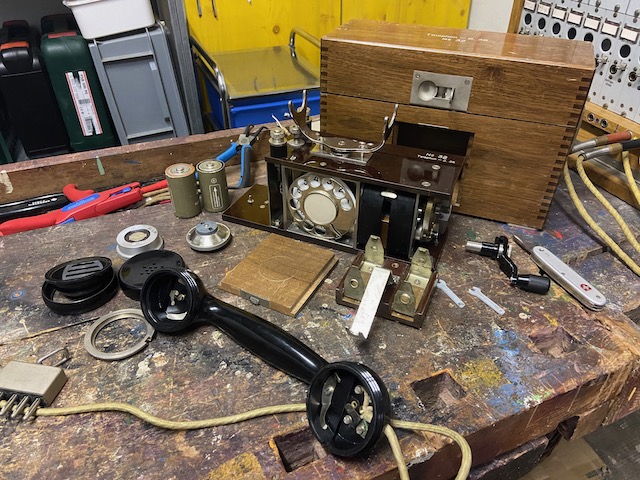
No documentation regarding the exact use of this instrument is known. On the lid the instrument is called "Telephon-S. 36" (probably S. for "Station" and 36 for the year 1936), on the diagram it is called "Feldstation K.T.A." which seem to indicate an army connection, "K.T.A." being an abbreviation for "Kriegstechnische Abteilung" (Dept. of war technology, then responsible for definition and acquisition of army material). It is not mentioned in any Swiss army signal corps regulations and also not in any secondary literature (apart from [1]), it was for sure not a standard signal corps issue. My assumption is that his instrument has only been used by army assigned PTT specialist working on interconnecting field-telephony and PTT systems. All instruments seem to have been made by Gfeller A.G., capacitor dates from known samples indicate production from 1935 [1] up to 1957. One of my samples is part of a lineman's tool case which may be from army or PTT provenience.
The instrument can be used on LB and CB/Aut. lines. No LB - CB setting is required, the circuit setup can manage both types. The microphone is powered by 2x 1,5V D-Cells which are put into a removable battery holder. The transmit circuit setup requires the batteries also in CB operation. The hookswitch closes the microphone battery circuit and shortens out the 2uF (2x 1uF) capacitor which blocks the loop current in CB operation, the ringer then acts as holding coil. The receiver is always connected to the line (with a 0,5uF capacitor to block the CB loop current and ringing currents) so also buzzer signalling could be heard. The ringer has no bells, it only hits on adjustable screws generating a clapping sound. It is assumed that the bells were not installed to save space. The built in dial is a standard Swiss PTT dial. The bakelite handset is of type Swiss PTT 1931, the same as on the ATf 32 and also using the same connector plug.
Built in dial hidden behind a door in the front side of the instrument box.
Disassembled.

Bakelite handset Swiss type PTT 1931 using the same connector as on the ATf 32.
The RX capsuel is from 1938 whereas the TX capsule is a modern Philips dynamic transmitter from the 80ies indicating that the instrument was still in use then.
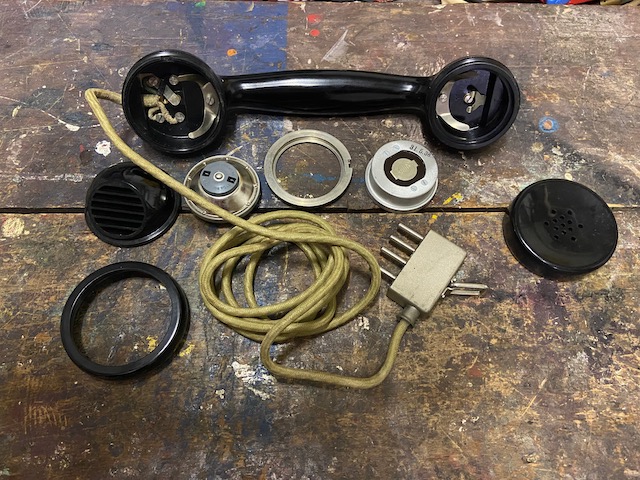
The battery holder takes 2 standard D-Cells (here some reproductions of Swiss Leclanché army type).
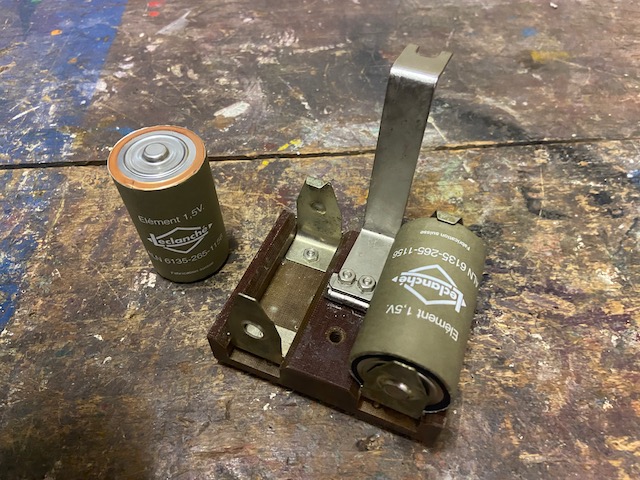
The battery holder bottom.
The battery holder is placed on two connector pins on the chassis bottom plate and then fixed on the chassis top using the attached foldable arm.
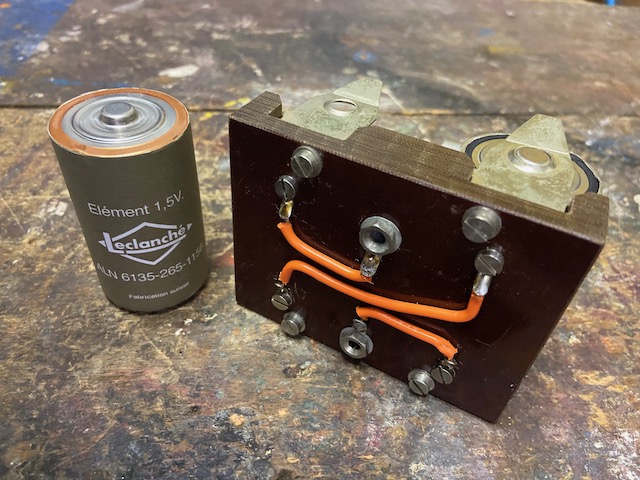
The chassis front with the dial and the magneto.

The chassis from the back with the capacitors (dated 1938 and 1939, the two 1uF are combined to form a 2uF capacity) dial connector and ringe coil visible.

Ringer close up.
No bells, the ringer pin just hits a latch and makes a clapping noise.
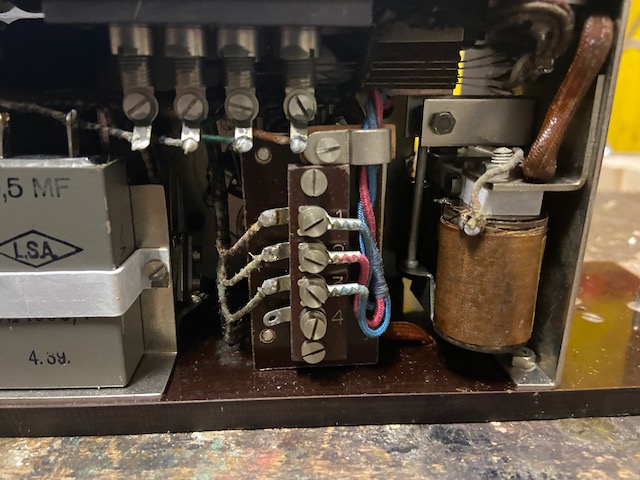
On the chassis bottom this removable "tools?" are mounted.
They are not wrenches, the holes are round.
I have no idea what they could be used for.
As they are mounted inside the instrument one would think it serves for some instrument adjustments but there is nothing really adjustable on the instrument apart perhaps from the dial, yet to reach the dial you need anyway to dismantle the instrument completely, not something you would do "in the field" but in a workshop where you have the utils anyway.
Apart from that I also would not know what to adjust on the dial with these tools.
It's a mystery, if anyone has an idea please get in touch.
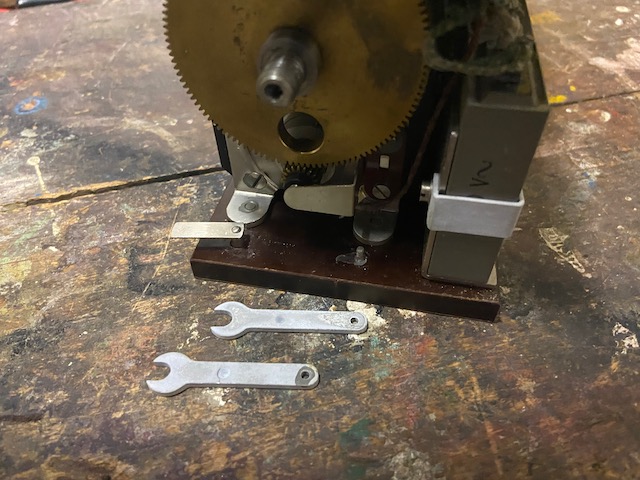
The tools mounted.
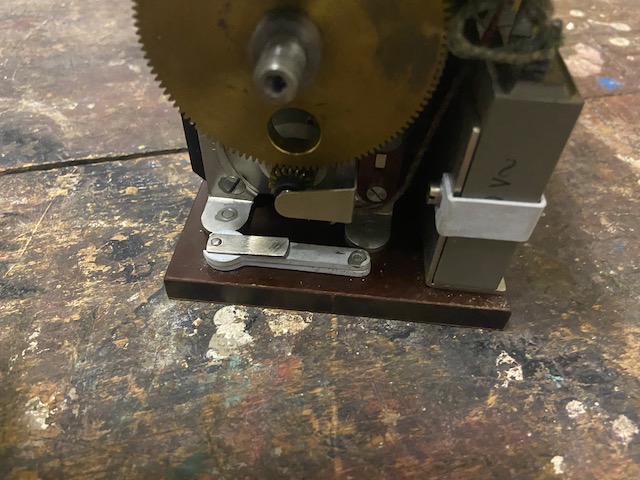
The chassis and the batteries mounted into the box.
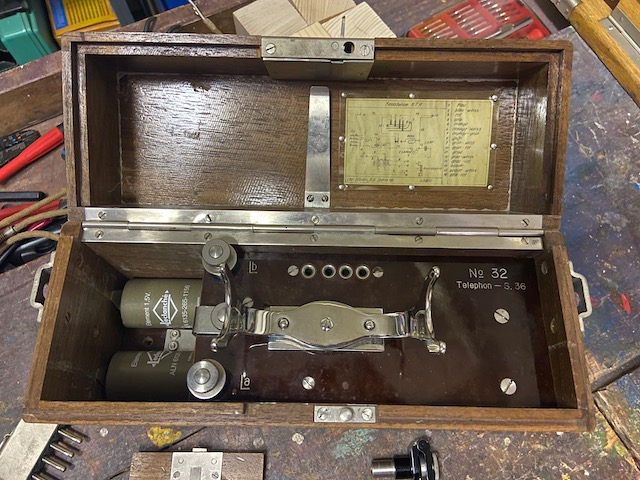
The diagram.
Nothing special here.
A very simple and straightforward circuit setup.
On the diagram the instrument is called "Feldstation K.T.A.".
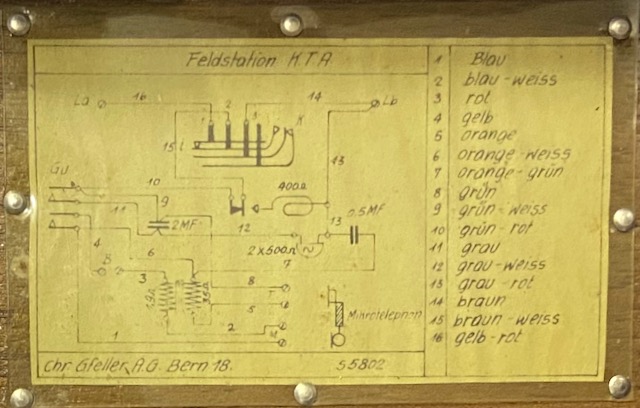
Ready to use on a CB/aut. line.
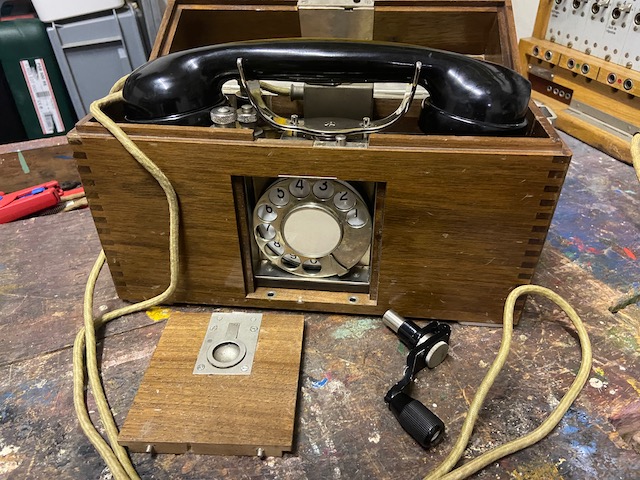
Ready to use on an LB line.
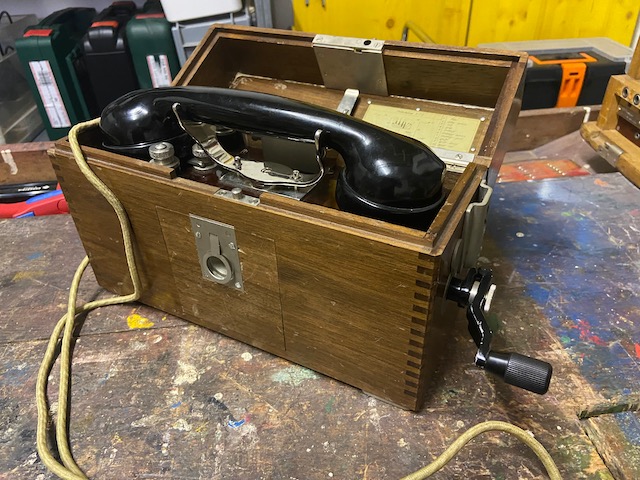
Prepared for transport.
The magneto lever has no holder or bracket, it is just "thrown" inside.
The lever is the same foldable lever used on the ATf 32.
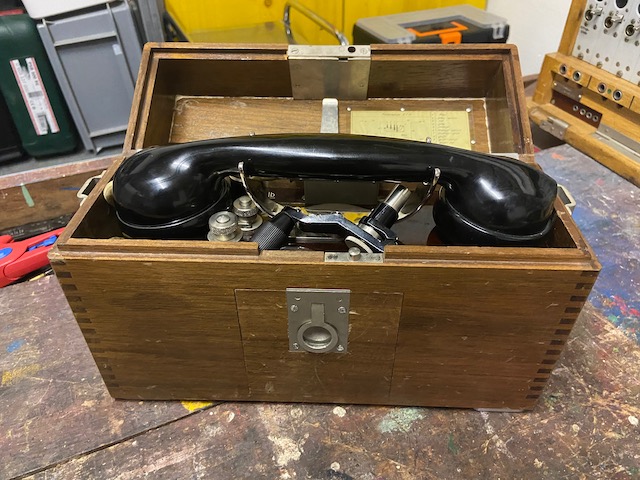
Ready to transport.
There are brackets to take a standard Swiss army fieldphone carrying belt.
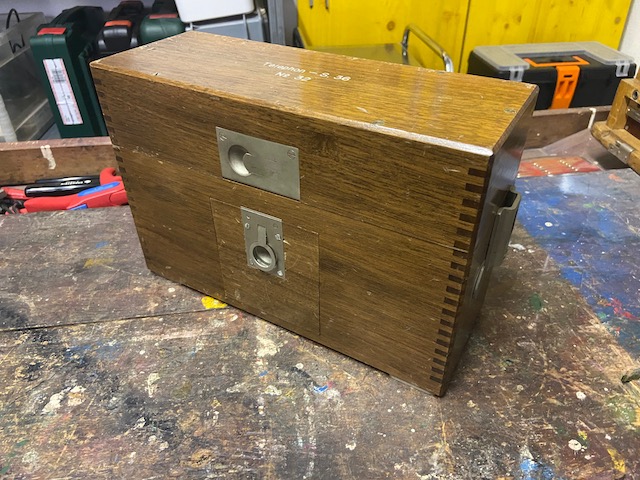
On the lid the instrument is called "Telephon-S. 36" (Assuming to mean: "Telephon-Station 1936").
The 32 is assumed to indicate a serial or inventory number.
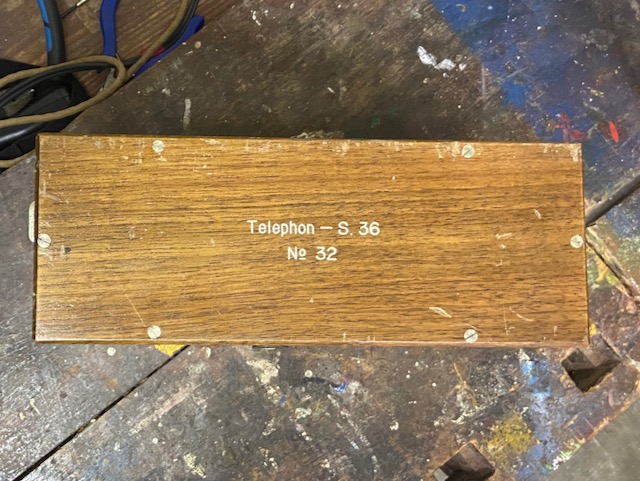
This instrument was part of a lineman's toolbox.
The box includes some standard tools, a soldering iron, a special three prong key to open Swiss PTT line boxes, an Ohmmeter, a continuity tester, a headset, some lengths of wire and a can for some cleaning liquid.
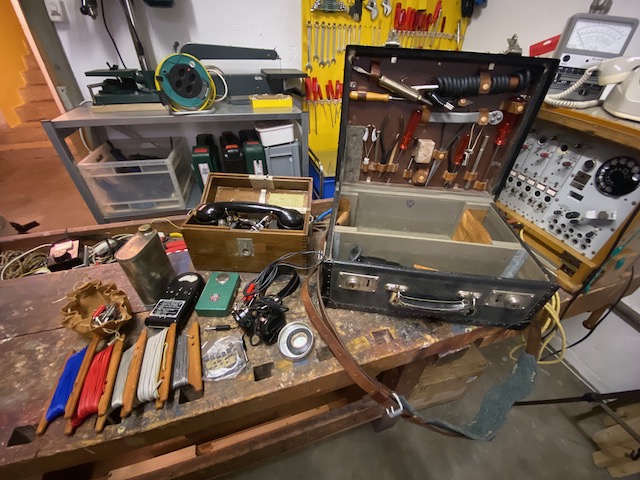
Instrument packed in tooolbox.
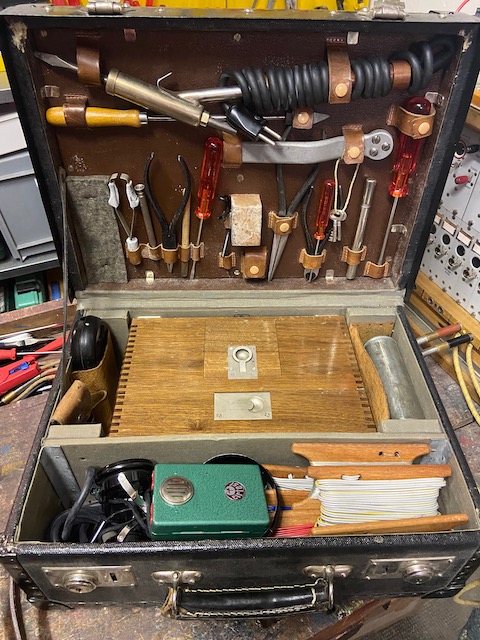
Ready for transport.
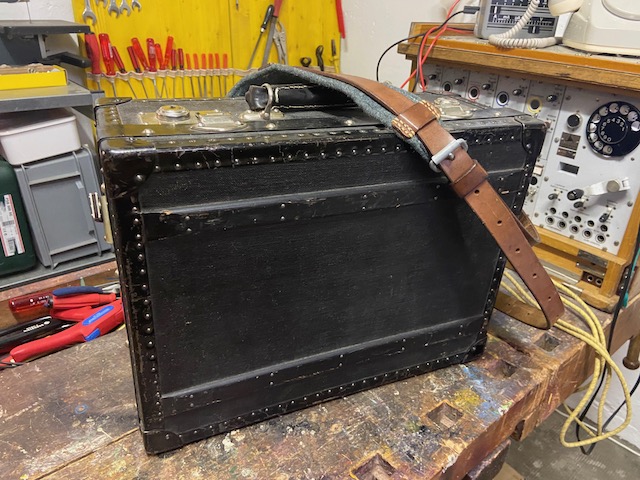
This is a later made instrument of the same type.
According to capacitor dates made in or after 1957, or repaired then, but the magneto also indicates a mfg. date after 1950.
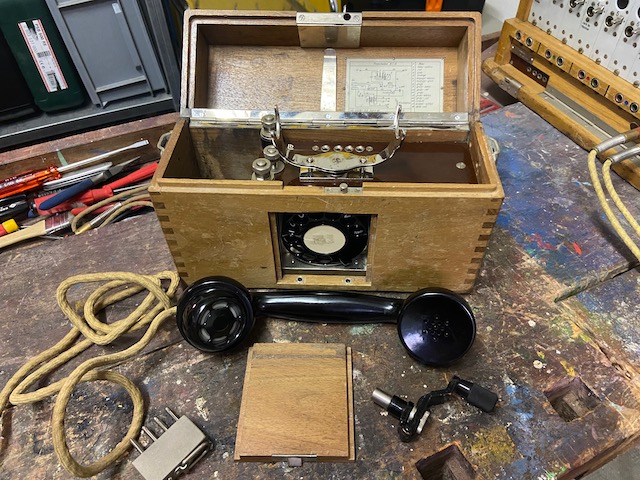
A newer dial with black dial disk and a newer magneto.
It seems to be a similar magneto than used in the FTf 50.

It has still mounted the unknown tools.
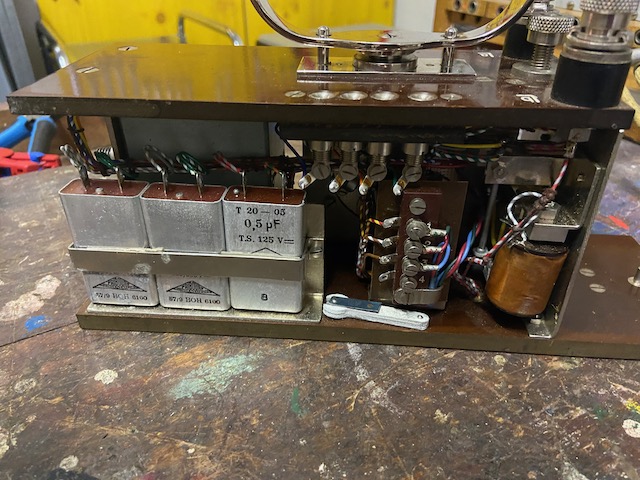
The diagram is exactly the same.
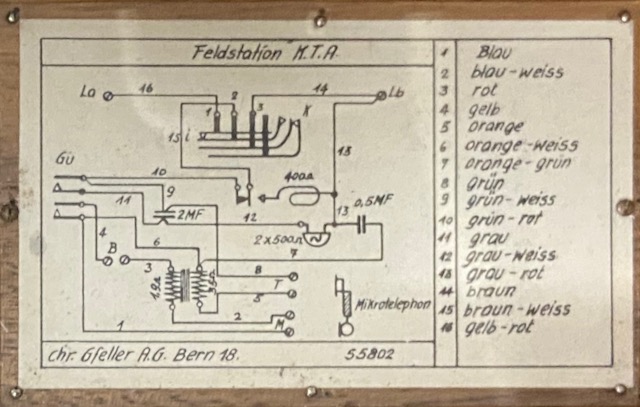
Side by side of the 1957 and 1939 boxes, the newer one has no inscriptions on the top lid.
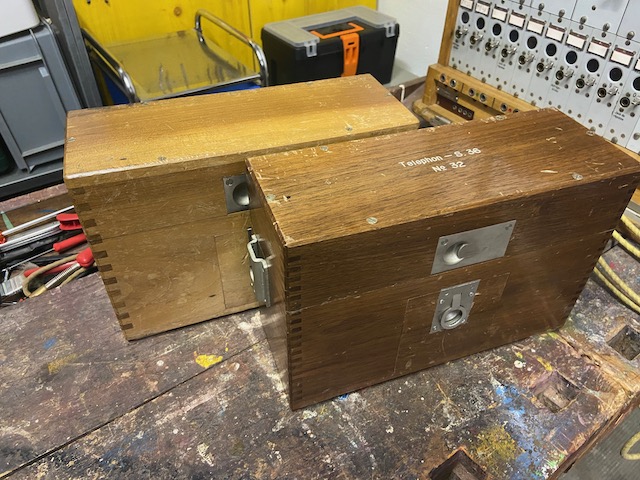
Creative Commons Attribution-ShareAlike 4.0 International License